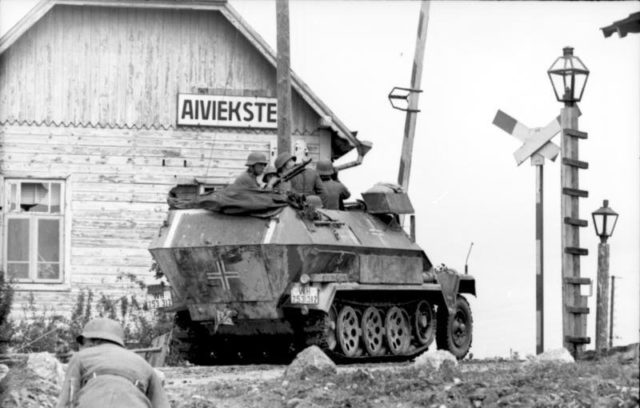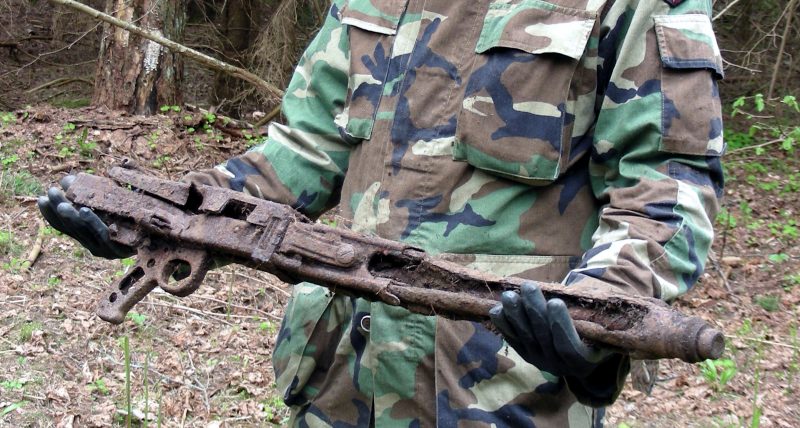The volunteer group, Legenda, sifts through the WWII battlefields of Latvia looking for the remains of soldiers. They then exhume them and send them home for proper burials. Talis Esmits, the co-founder, estimated that he handles around 700 human remains a year.
In 1944, about 350,000 Nazi soldiers were cut off from the rest of the line. By that time, Hitler had already had approximately 70,000 Latvian Jews murdered. Around 100,000 Nazi soldiers were killed by the Red Army. Thousands of Latvians were deported to Siberia to work. Along with the vast numbers of unrecovered bodies in the area, tons (literally) of other WWII relics – everything from shell fragments and bullet casings to rifles and gas masks – lay abandoned in the mud
Along with the vast numbers of unrecovered bodies in the area, tons (literally) of other WWII relics – everything from shell fragments and bullet casings to rifles and gas masks – lay abandoned in the mud.
The market for Nazi memorabilia has been increasing lately. A sweat-stained uniform worn by Hermann Göring sold for $126,000 in 2015.

Legenda finds themselves racing treasure hunters and grave robbers to recover the remains of soldiers before they are defiled by amateurs with metal detectors. It is estimated that there are between 10,000 and 15,000 amateur metal detectorists in Europe, and most of these undoubtedly have a great deal of respect for what is essentially a mass graveyard, but it only takes one rotten apple to spoil the bunch. Official diggers need to post armed guards at times.
One digger found a long shard of metal from the ground. Pieces of shrapnel like this could fly hundreds of feet from an exploding shell before embedding itself deep in a tree or a soldier.
